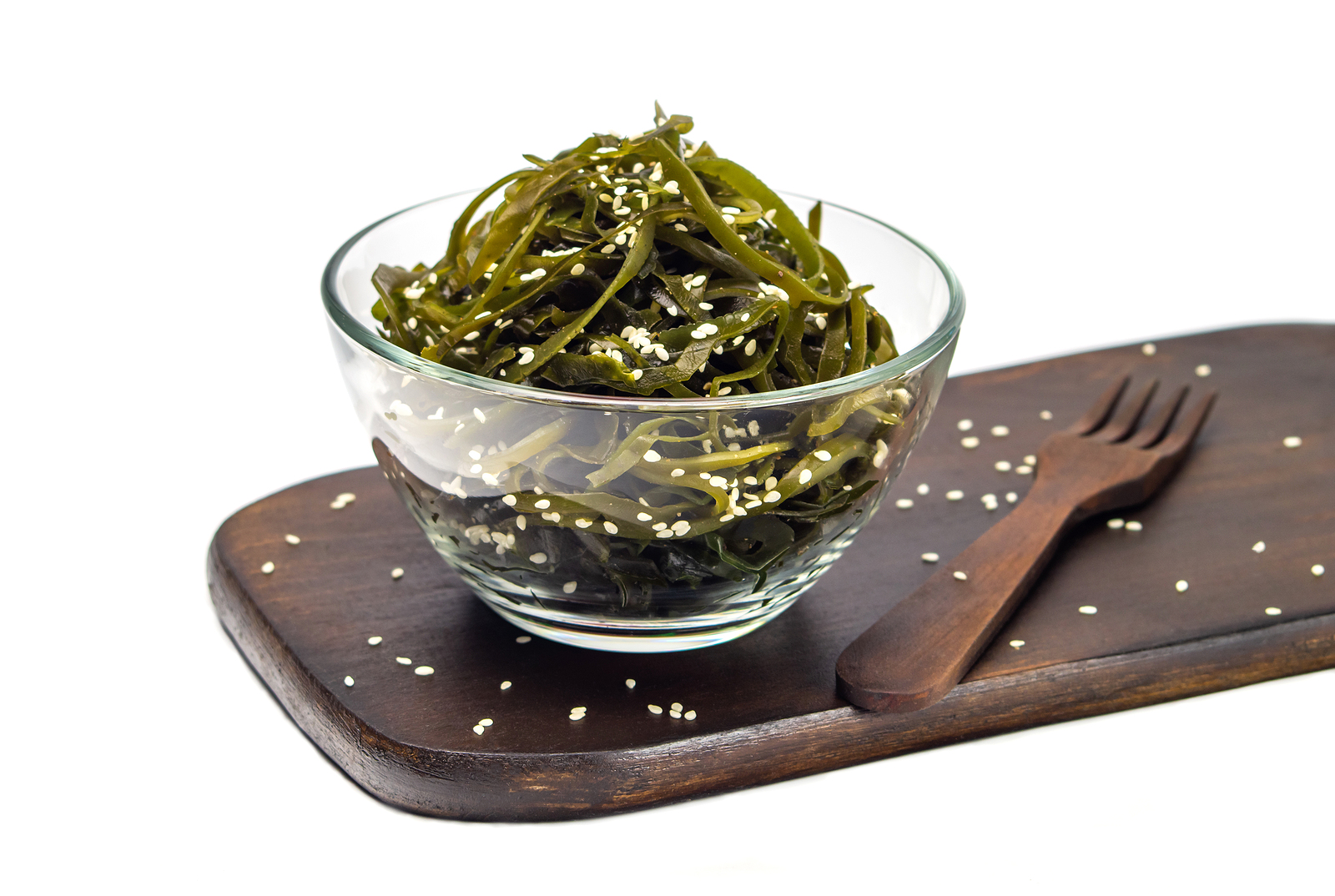Sea Vegetables

If you are like most people, then you may be thinking that consuming the Nori wrapped around California rolls is about as close to eating sea vegetables as you can get. It’s actually a lot easier than one might think to find and consume these weedy treasures of the ocean. Sea vegetables can be purchased at most Asian markets as well as a growing number of whole food stores. The internet is also a great resource for purchasing food ingredients that may not be easily found.
All the leafy sea vegetables (which are discussed and pictured individually here) are full of nutrients, due to their mineral content. The minerals found in these leaves are the same minerals found in human blood and are necessary for optimal physiological function. Sea vegetables are low in calories but high in vitamin content. Most sea vegetables contain the vitamin B12. Vitamin B12 fights off fatigue and memory loss and is only otherwise found in animal products. This is good news for vegans! Asian cultures have used seaweed for many generations in the healing of various ailments, from malignant tumors to goiters (due to the iodine in seaweed). Sea vegetables are finally becoming more popular in the western world.
Most people are familiar with Nori. Nori is typically wrapped around sushi rolls. It is high in Vitamins C and A, both powerful antioxidants. Ingesting Nori regularly can help build immunity and improve vision.
Kelp is a great replacement for salt in soups and stir-fried meals. This is a wonderful alternative for those people who have high blood pressure and cannot consume salt. Kelp is high in folate which, according to the March of Dimes, prevents birth defects.
Kombu is high in iron, calcium, and iodine. Kombu can be simmered to create a concentrated and natural form of the controversial MSG by extracting sodium glutamate from its leaves.
Dulse is high in potassium, phosphorus, iron, protein, and vitamin C. Dulse makes a great snack which kids love, because it melts in your mouth.
These are just a few of the more common and popular sea vegetables. Be adventurous! Next time you head to the whole food marketplace in your area, grab some sea vegetables and try a new recipe.
It is important to buy your sea vegetables only from vendors that source their goods from unpolluted waters.
“Good sea vegetable companies are very particular about where and how their seaweed is harvested, dried, and stored and test it regularly for heavy metals, as well as herbicides, pesticides, and microbial contaminants. Always purchase sea vegetables from companies that have a commitment to providing a high-quality product.” –The Essential Good Food Guide by Margaret Wittenberg

You must be logged in to post a comment.